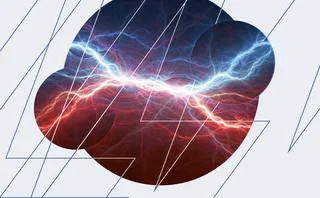
No need to be negative about negative prices
Electricity prices falling below zero are not a sign of end times, but a valid price signal

The phenomenon of electricity prices dropping below zero has been in the news lately, and it is often seen as a sign of government renewable-energy policies running amok.
That's not entirely wrong. Negative prices tend to arise when an influx of inflexible wind and solar power floods the grid at times of low demand, in locations where there is insufficient transmission capacity to deliver the power to where it's really needed.
Such episodes first drew widespread attention in Germany, which has the most installed solar capacity of any country in the world. Lately, they have also become a fact of life in the US – particularly in Texas and California, which boast significant penetration by wind and solar, respectively.
This has rankled many power plant owners, which understandably prefer to receive cash for generating electricity rather than being forced to pay for the privilege. In the US, for instance, Chicago-based Exelon has complained loudly about the impact of negative prices on its nuclear facilities in Illinois. Nuclear plants cannot start up and shut down easily, so Exelon's facilities are forced to swallow overnight spells of negative pricing to make money the next day.
But that doesn't mean negative prices are a cause for alarm. For one thing, negative pricing episodes are rare, despite the media attention they have been getting. In Texas, for instance, less than 1% of the prices seen in 2015 in the market run by the Electric Reliability Council of Texas (Ercot) last year were negative, and the frequency of negative price events in Ercot has actually fallen since 2011.
More importantly, such events are a price signal, just like any other price in a market. Whether positive or negative, prices guide the strategies of market participants in both the short and long term, ultimately yielding more efficient outcomes.
Whether positive or negative, prices guide the strategies of market participants in both the short and long term, ultimately yielding more efficient outcomes
So what are negative prices telling us? Several conclusions can be drawn. First, flexibility is important. Modern, natural gas-fired plants that can ramp up and down quickly are the ideal dancing partner for intermittent renewable resources; they can shut off when windy conditions send prices plunging, then come back online when the wind slows.
Second, consumers should be empowered to use more energy when prices go negative. Not only will they collect money for doing so, allowing them to offset bills incurred during more normal periods of positive pricing, but the increased demand will turn negative prices into a self-correcting problem. In other words, as consumers cash in on negative prices, the market will rebalance. Traditionally, this sort of thing would have been impossible, but with ‘smart grid' technology it is now within reach.
Above all, though, negative power prices make it more attractive to develop grid-level storage. In places such as California, governments are encouraging the deployment of energy storage technology, which can suck up excess power when renewables are overwhelming the grid and release it when the sun goes away or the wind dies down.
Think what negative prices mean if you own energy storage. When prices fall below zero, you make money by storing energy; when prices return to positive territory, you make money by selling it back into the market. What you have isn't just a big battery, but a round-the-clock profit machine.
In short, there's no need to get negative about negative power prices. They're just another signal pointing the way to a smarter energy future.
Only users who have a paid subscription or are part of a corporate subscription are able to print or copy content.
To access these options, along with all other subscription benefits, please contact info@risk.net or view our subscription options here: http://subscriptions.risk.net/subscribe
You are currently unable to print this content. Please contact info@risk.net to find out more.
You are currently unable to copy this content. Please contact info@risk.net to find out more.
Copyright Infopro Digital Limited. All rights reserved.
You may share this content using our article tools. Printing this content is for the sole use of the Authorised User (named subscriber), as outlined in our terms and conditions - https://www.infopro-insight.com/terms-conditions/insight-subscriptions/
If you would like to purchase additional rights please email info@risk.net
Copyright Infopro Digital Limited. All rights reserved.
You may share this content using our article tools. Copying this content is for the sole use of the Authorised User (named subscriber), as outlined in our terms and conditions - https://www.infopro-insight.com/terms-conditions/insight-subscriptions/
If you would like to purchase additional rights please email info@risk.net
More on Energy
Energy Risk Commodity Rankings 2024: markets buffeted by geopolitics and economic woes
Winners of the 2024 Commodity Rankings steeled clients to navigate competing forces
Chartis Energy50
The latest iteration of Chartis’ Energy50 ranking
Energy trade surveillance solutions 2023: market and vendor landscape
The market for energy trading surveillance solutions, though small, is expanding as specialist vendors emerge, catering to diverse geographies and market specifics. These vendors, which originate from various sectors, contribute further to the market’s…
Achieving net zero with carbon offsets: best practices and what to avoid
A survey by Risk.net and ION Commodities found that firms are wary of using carbon offsets in their net-zero strategies. While this is understandable, given the reputational risk of many offset projects, it is likely to be extremely difficult and more…
Chartis Energy50 2023
The latest iteration of Chartis' Energy50 2023 ranking and report considers the key issues in today’s energy space, and assesses the vendors operating within it
ION Commodities: spotlight on risk management trends
Energy Risk Software Rankings and awards winner’s interview: ION Commodities
Lacima’s models stand the test of major risk events
Lacima’s consistent approach between trading and risk has allowed it to dominate the enterprise risk software analytics and metrics categories for nearly a decade
2021 brings big changes to the carbon market landscape
ZE PowerGroup Inc. explores how newly launched emissions trading systems, recently established task forces, upcoming initiatives and the new US President, Joe Biden, and his administration can further the drive towards tackling the climate crisis
Most read
- Top 10 operational risks for 2024
- Japanese megabanks shun internal models as FRTB bites
- Top 10 op risks: third parties stoke cyber risk







